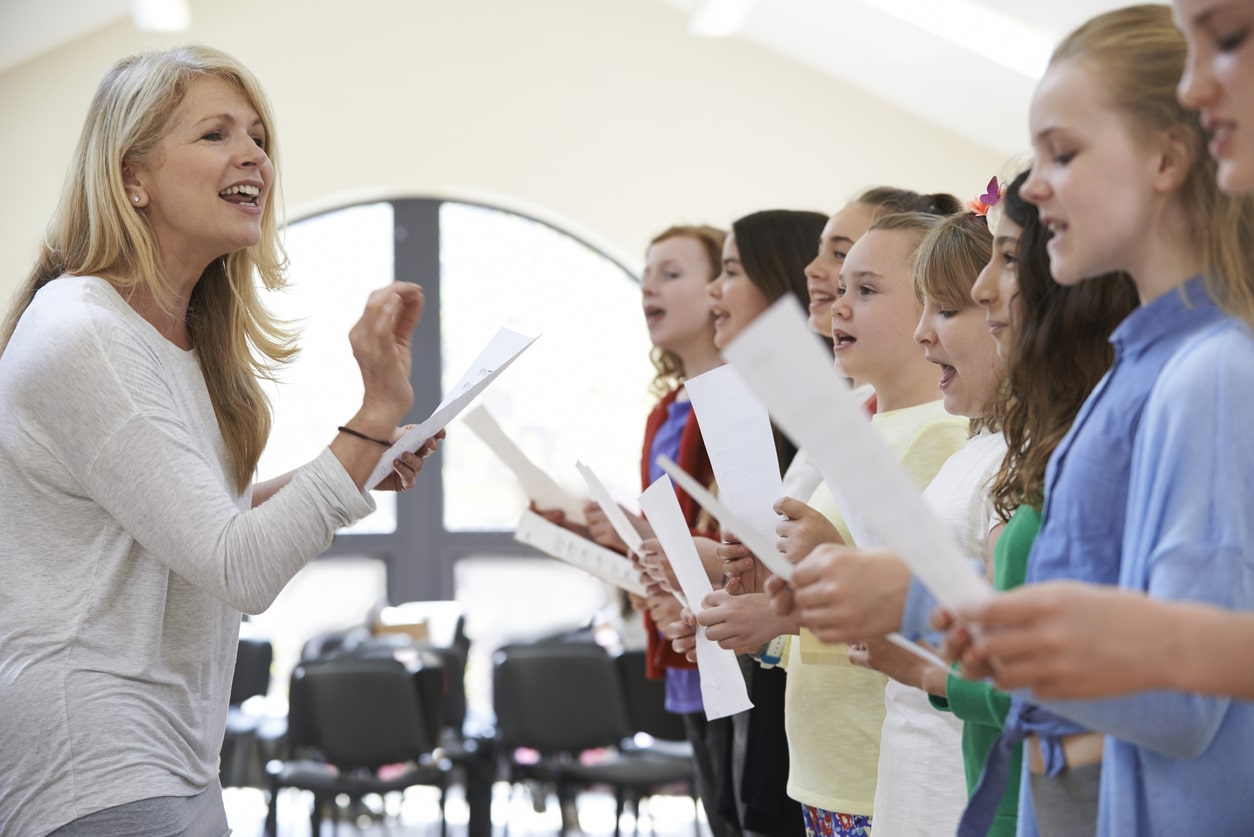According to the 2021 Duolingo Language Report, Korean continues to be one of the world’s most popular languages to study (7th globally) and it’s the fastest-growing language in massive markets such as Brazil, France, Germany, India and Mexico. But why? Well, Korean culture and entertainment are now globally successful (e.g Parasite and Squid Game) but the explosion in popularity of K-Pop acts such as BTS and Blackpink is also a key factor.
Music offers many advantages for learning languages (it’s a natural mnemonic device, for example) and its universal appeal makes it a useful tool to use in your language classroom. Importantly, music and language also share key elements such as volume, pauses, rhythm, tone and pitch. So with this in mind, this blog post looks at how language educators can use music and song in language teaching to engage students and to boost their language outcomes. Check out also our earlier blog post “improving language teaching with music”.
Remember to also watch our instructional video on how to use songs in language teaching using our Sanako Connect platform.

Evidence-based impact of using music in language teaching
Let’s start by looking at two research studies which demonstrate a clear link between music and improved language outcomes.
A 2018 study from MIT, for example, found that piano lessons have a positive effect on the ability of learners in kindergarten to distinguish different pitches. This, the study concludes, “translates into an improvement in discriminating between spoken words”. The study, which was run in schools in Beijing, goes on to suggest that musical training is “at least as beneficial in improving language skills, and possibly more beneficial, than offering children extra reading lessons.”
Similarly, a 2013 study by a team at Scotland’s University of Edinburgh found evidence that singing can help facilitate language learning. Sixty adults participated in the study, which involved 15 minutes of listening to Hungarian phrases and then repeating the phrases normally or through song. When the participants were tested on the material, the researchers discovered those who repeated the phrases through song scored higher than those who did not.
Why should language teachers use music / song to support language learning?
A detailed review of the literature in this space identifies a number of significant benefits to using music and songs as part of your language teaching.
1. Builds vocabulary and listening skills
When listening to a song in their target language, students will invariably pick up new words and phrases that they have not heard before. It’s also likely that they will encounter words and phrases being used in different or non-traditional contexts. Each song also tells a story – of love, loss or triumph – so students can develop their listening skills as they work out what’s happening when, where, how and to whom. Of course, the simple act of listening to music in their target language also helps their brains become more familiar with the language’s sound, rhythm and tone.
2. Authentic learning material
Educators often struggle to make their lessons real and relevant, particularly for high school learners. Using music and song can therefore be a great way to engage and enthuse them. After all, song lyrics contain the language that native speakers actually use every day (e.g slang, text speak or colloquialisms) that are in stark contrast to the formulaic and rigid text that’s usually used in language textbooks.
3. Personalisation
Everyone has music that they love, hate and in some cases both! So use the emotion that music generates to encourage student engagement. Get them to talk about their favourite artists, to argue why jazz is better than rap or to interpret Madonna’s cultural significance. And given that everyone has easy access to music through radio, Spotify or YouTube, music is a universal language that everyone can understand and be engaged by.
4. Perfecting pronunciation
There’s also a huge benefit for students to learn to sing songs in their target language. When singing in a different language, we automatically try to reproduce the sound and tone of what we hear and our accent is less pronounced than when we speak. Watching music videos of songs can also help teach the shapes learners need to make in order to generate the right sound.
And of course singing also helps to remind learners of the new vocabulary that they have picked up. Setting the alphabet and multiplication tables to song demonstrates just how effective these techniques can be!
5. Building productive skills
There’s also a wealth of language learning potential in using song lyrics to stimulate student enquiry and to develop critical thinking skills. Encourage them to consider connections between a song and their own experiences – how accurately did the song reflect their feelings and what words/phrases were most effective? Lyrics also provide a powerful jumping off point for students’ own creative work, as detailed above.
6. Discover more about culture
Artists as diverse as Edith Piaf and Jay-Z have sung about Paris and these songs can, for example, provide French language learners with real insight about life and culture in the French capital. Students can use them to uncover a wealth of information about French tradition, history, philosophy and literature, which enriches and supports their specific language learning objectives.
How to use music in your language classroom?
Our blog posts always try to provide practical tips and tricks that language educators can use in their own classrooms. This blog post is no exception, so we’ve tried to build on and update the exceptional lesson ideas contained in Adam J. Simpson’s 2015 blog post for the British Council. His six-stage plan focuses on how to use songs in the language classroom and is easily applicable to language lessons held across the world.
1. Listen to the song
An easy and straight-forward start – just play the song you’ve chosen, ensuring that everyone can hear it and that it’s appropriate for the age group and country you’re teaching in.
When it’s finished ask them if they’ve heard it before, whether they know anything about the artist and if they enjoyed it. If there are obvious rhymes or repetitions that jump out then ask if anyone spotted them.
2. Begin at the beginning
Spending a few minutes thinking about the title of the song is a great place to then move on to. If you’re studying Bob Marley and the Wailers’ ‘Redemption Song’ you might get students to consider:
“What is redemption?”
“Why is the singer seeking redemption?”
“In what other areas do people look for redemption?”
As Simpson suggests these are great topics for interesting group conversations, so pull small groups together and get them to discuss and then share their thoughts.
3. Introduce the lyrics
Now it’s time to listen to the song again, but this time provide students with the lyrics, giving students the opportunity to read along while they listen. This provides the building block for subsequent activities – can they highlight rhymes, verbs, adjectives? Is there new vocabulary in the song – what do the words mean? Of course, giving students the lyrics doesn’t necessarily mean giving them all of the lyrics – why not create a worksheet that includes a gap fill exercise for the missing words?
4. Focus on grammar
Within the lyrics of each song, there’s plenty for students to learn about key grammar concepts. “We Can Work It Out” by The Beatles, for example, includes loads of excellent examples of how to use modal verbs.
On the other hand, “Ticket to Ride” by The Beatles provides an excellent example of how songwriters are flexible with rules to ensure that grammar works around the lyrics and not the other way around. (The famous lyric should be: “She’s got a ticket to ride, But she doesn’t care” but is actually, “But she don’t care.”)
5. Highlight vocabulary, idioms and expressions
Modern songwriters love idioms – there’s 18 in just one Katy Perry song! Help your students to understand what these common phrases actually mean – whether that’s “to go off the deep end” or “to wear my heart on my sleeve.” And, of course, look out for variants of language, whether that’s abbreviations, slang or street talk.
6. End on a creative high note!
As outlined above, use the song as a starting point for further creative expression. Write the next verse or even rewrite the whole song but keep the same title and tune. Perhaps your students could consider what happens next or maybe take a different person’s viewpoint?
Sanako is the global-leader in teacher-led language instruction technology. Our software supports language teachers to deliver inspiring and effective lessons. If you’d like to find out more about how Sanako’s dedicated language teaching software could transform your approach to language teaching, click here or the banner below to learn more!


